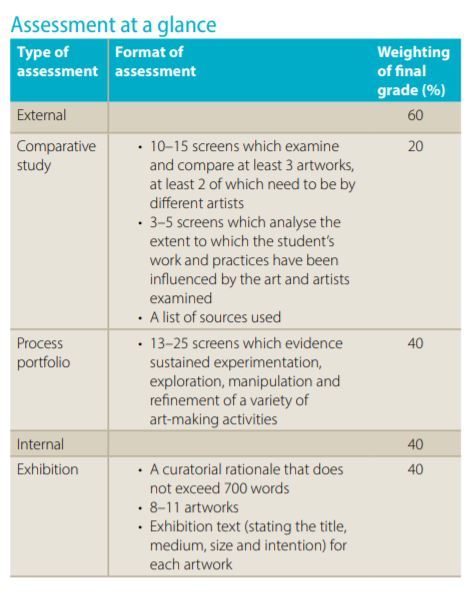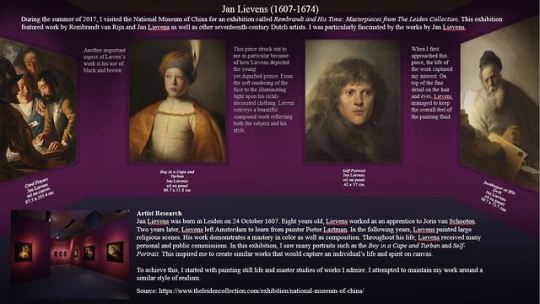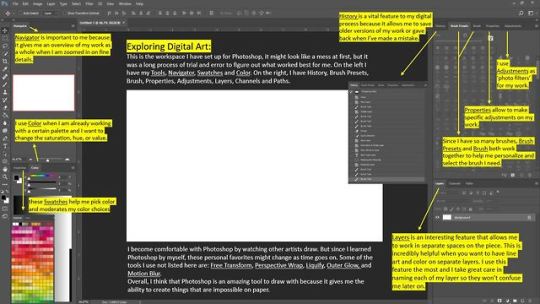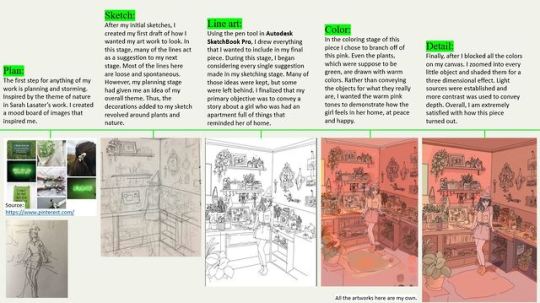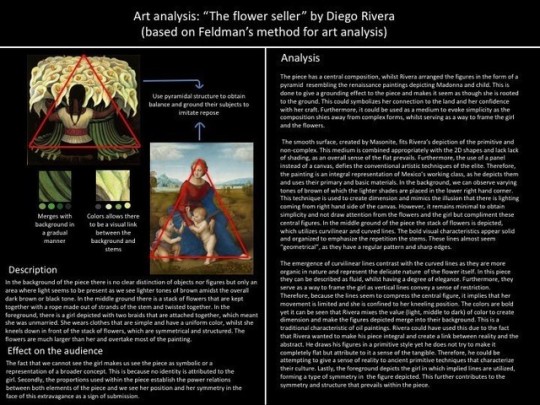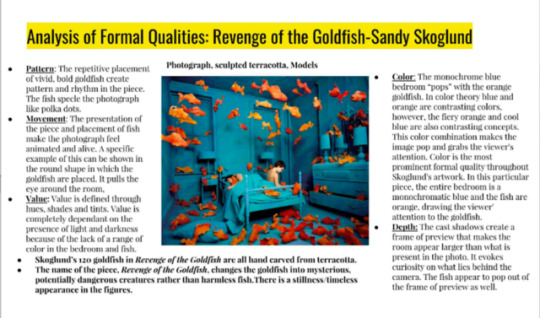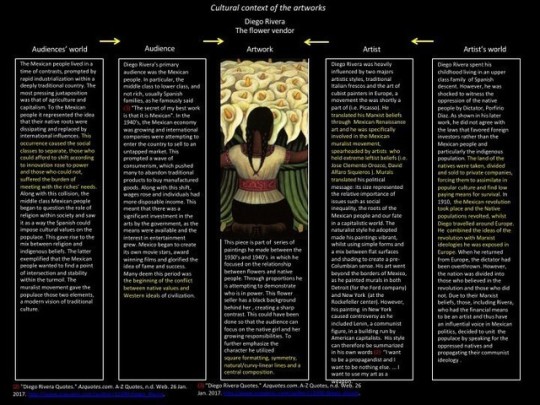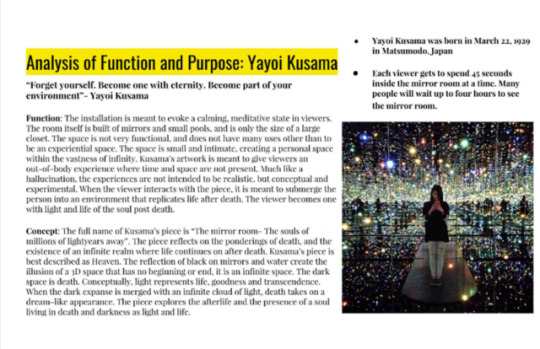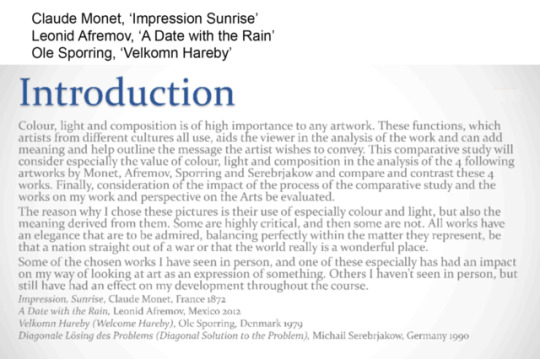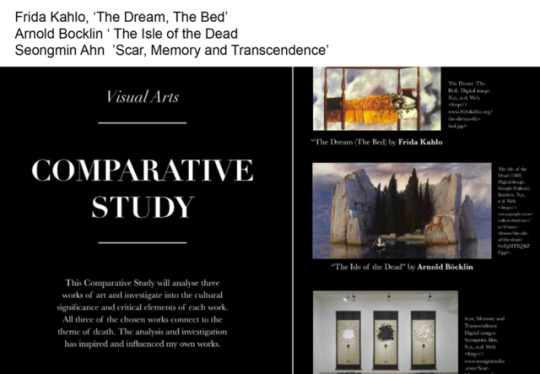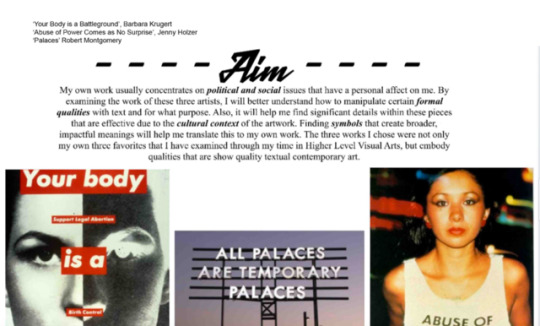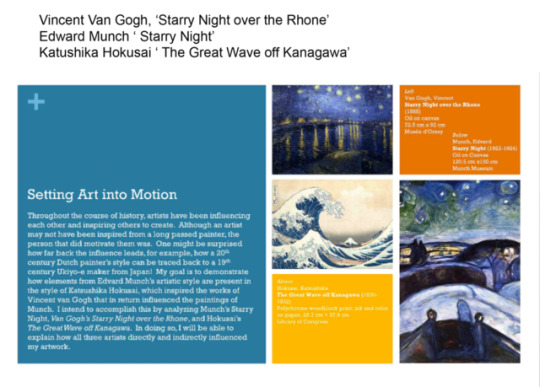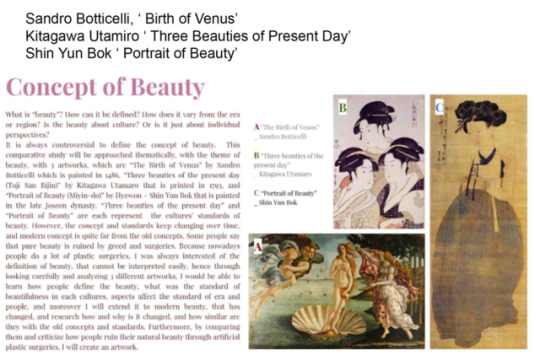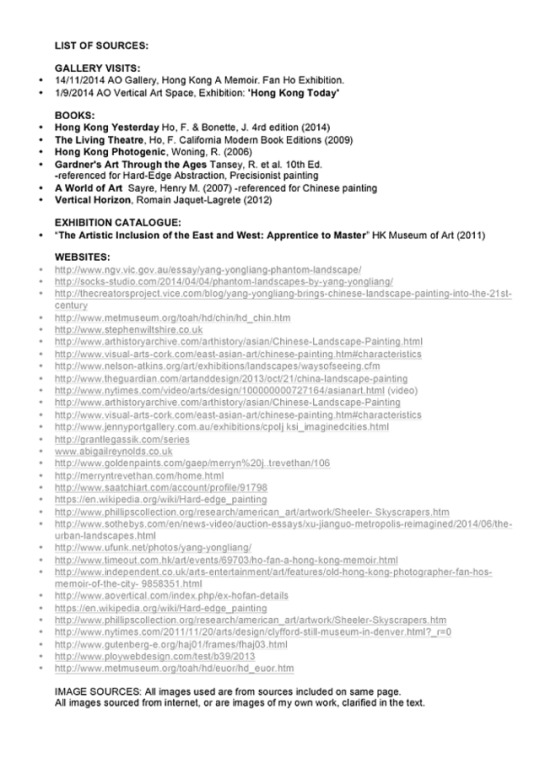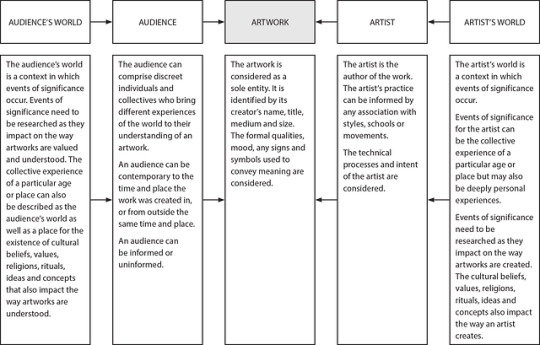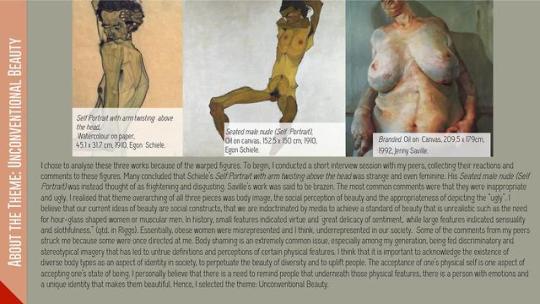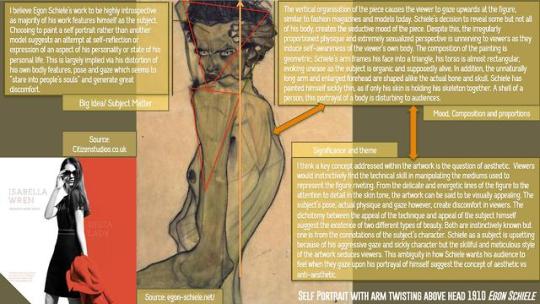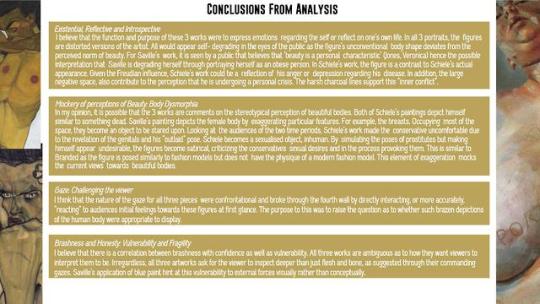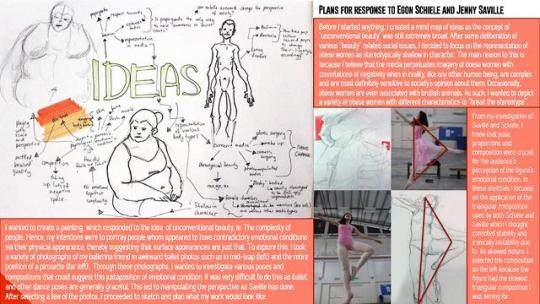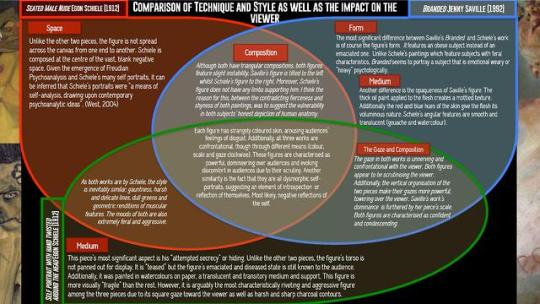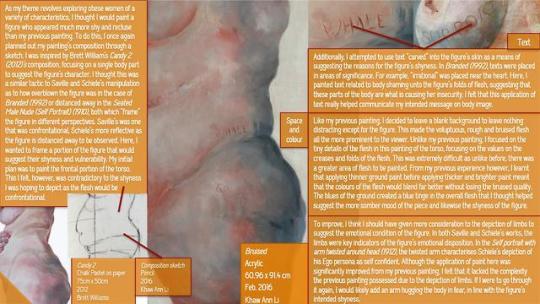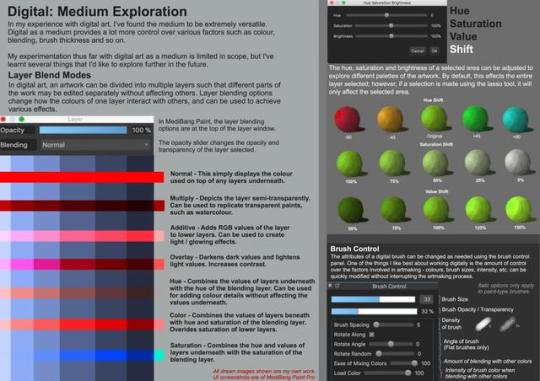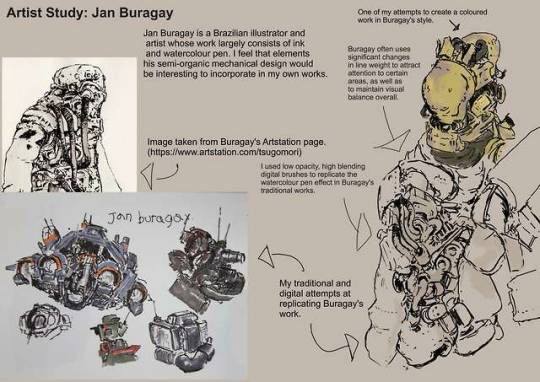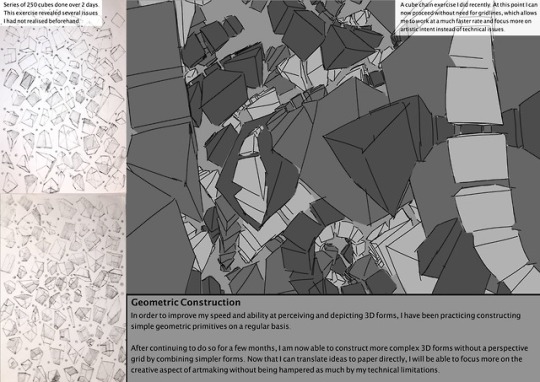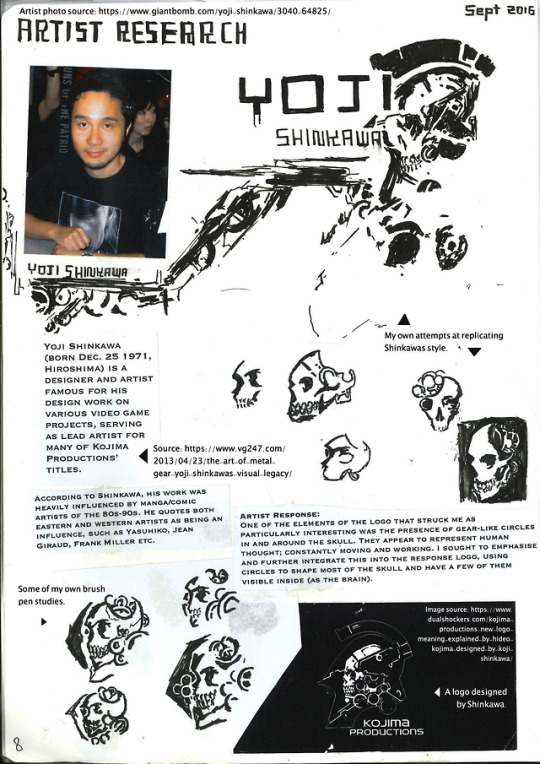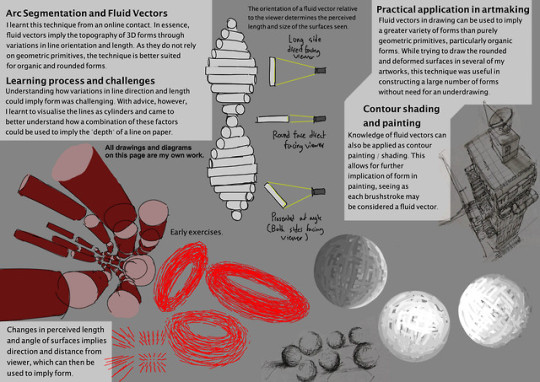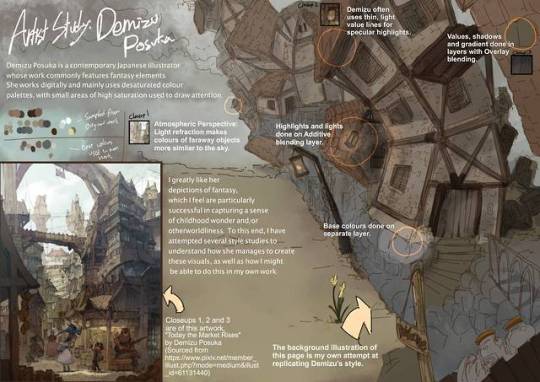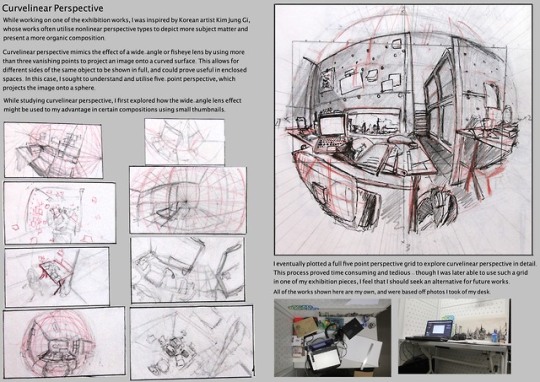Photo
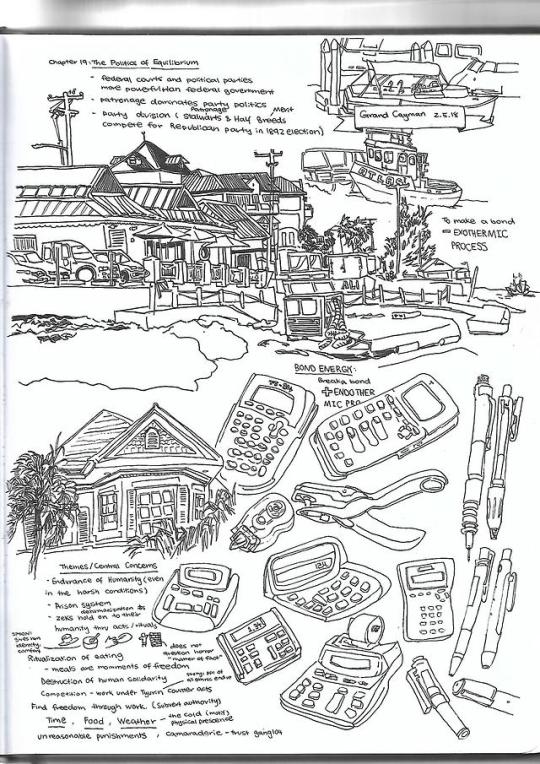
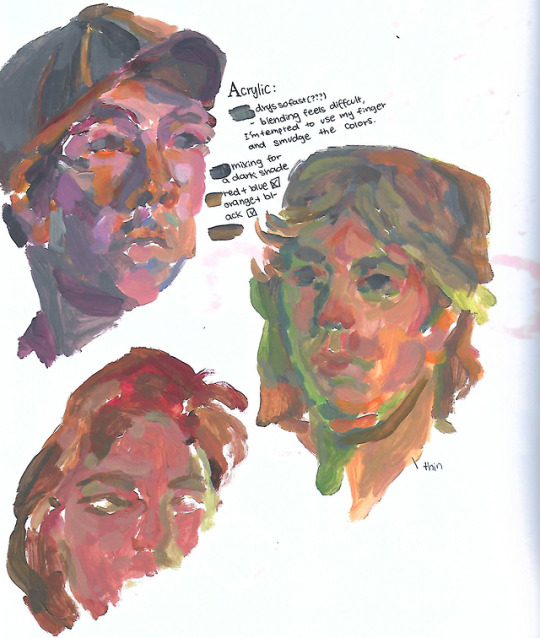
Keep your sketchbook pages to include in your Process Portfolio
0 notes
Text
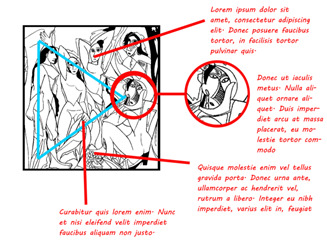
Annotations on a sketch, diagram or copy of an artwork can be used very successfully as part of a student’s analysis when undertaking a comparative study.
When annotating an artwork, a simple line drawing can be used or paste a copy of the artwork into the document with sufficient space to add call-outs to particular features, enlargements of details or overlays of compositional elements.
Call-outs can be used to highlight the use of art elements and design principles and identify any symbols used in the artwork to express ideas.
Overlays such as arrows, triangles, “S” shapes, directional lines and so on can be used to illustrate compositional arrangements.
Enlargements can be used to highlight typical and atypical features of techniques, materials and media used, the use of art elements and design principles and identify any symbols used in the artwork to express ideas.
0 notes
Text
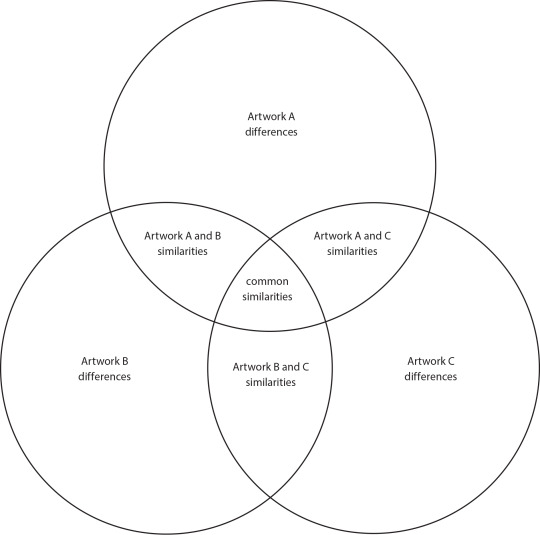
A simple Venn diagram can be used to compare and contrast two or more artworks.
Using two or more overlapping circles, similarities are recorded in the overlapping segments, while differences are shown in the non-overlapping parts.
A single Venn diagram can be used to compare and contrast the use of techniques, materials and media, the use of art elements and design principles, the use of symbols and imagery in the artwork to express ideas, the subject matter and composition of the artwork or style.
Alternatively, multiple Venn diagrams can be produced to explore each aspect separately, comparing and contrasting just the formal qualities, for example.
0 notes
Text
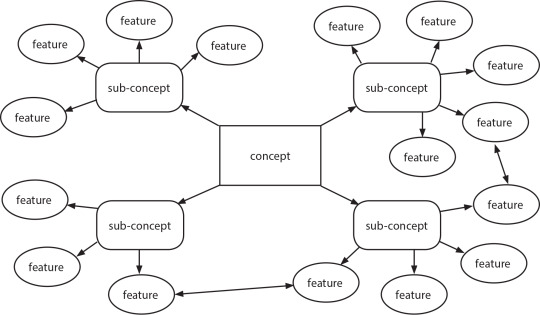
Concept maps, topic maps, Mind Maps® and other visual organizers can be used by students to organize knowledge and understandings about artists, artworks, styles and movements.
While there is some difference in approach between concept mapping, topic mapping and Mind Mapping, each uses a visual and hierarchical approach to organize key ideas or concepts.
Arrows, broken and unbroken lines can be used to show links between the core subjects matter, and the sub-concepts and features that emerge from it.
The linking arrows and lines can be further articulated with linking phrases such as “causes” or “leading to”.
0 notes
Text

Timelines and flow charts can be used to graphically communicate relationships between one idea and another in a linear or hierarchical fashion.
Timelines can be used to show the significance of an artist, style or movement to other artists, styles or movements.
Flow charts are ideal for illustrating processes either as a part of planning, or retrospectively.
0 notes
Text
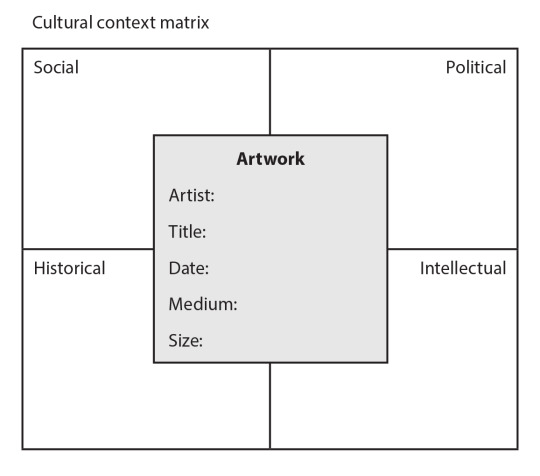
Matrices can be used to deconstruct issues and concepts from a common topic.
In the example to the left, a matrix is used to explore the cultural context of a given artwork. The artwork is identified in the centre, and then social, historical, political and intellectual influences or representations are considered in the surrounding matrix.
0 notes
Text

Figure 9
The art maps compass is based on the points of a compass. Beginning at North and working in a clockwise direction, the art maps compass asks eight key questions about an artwork that result in identifying the work, placing the work within a geographical and historical context and considering the meaning or purpose of the work.
0 notes
